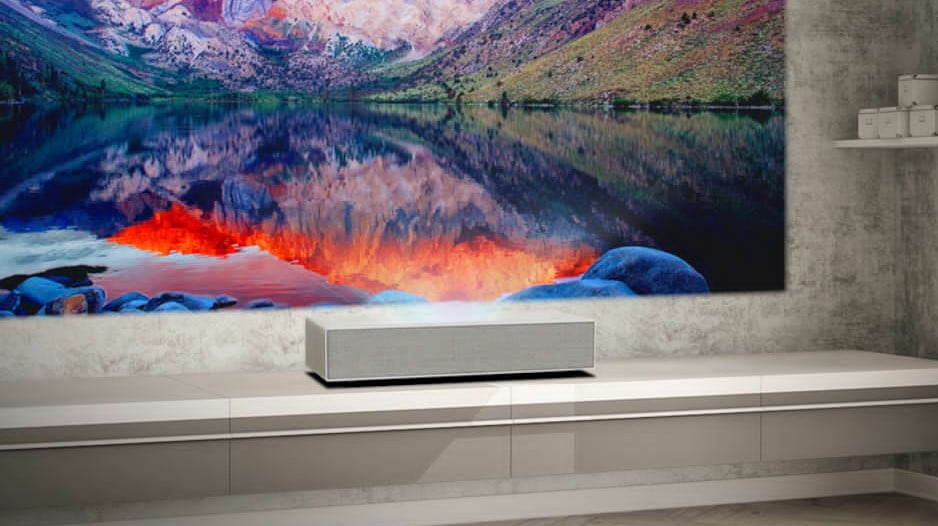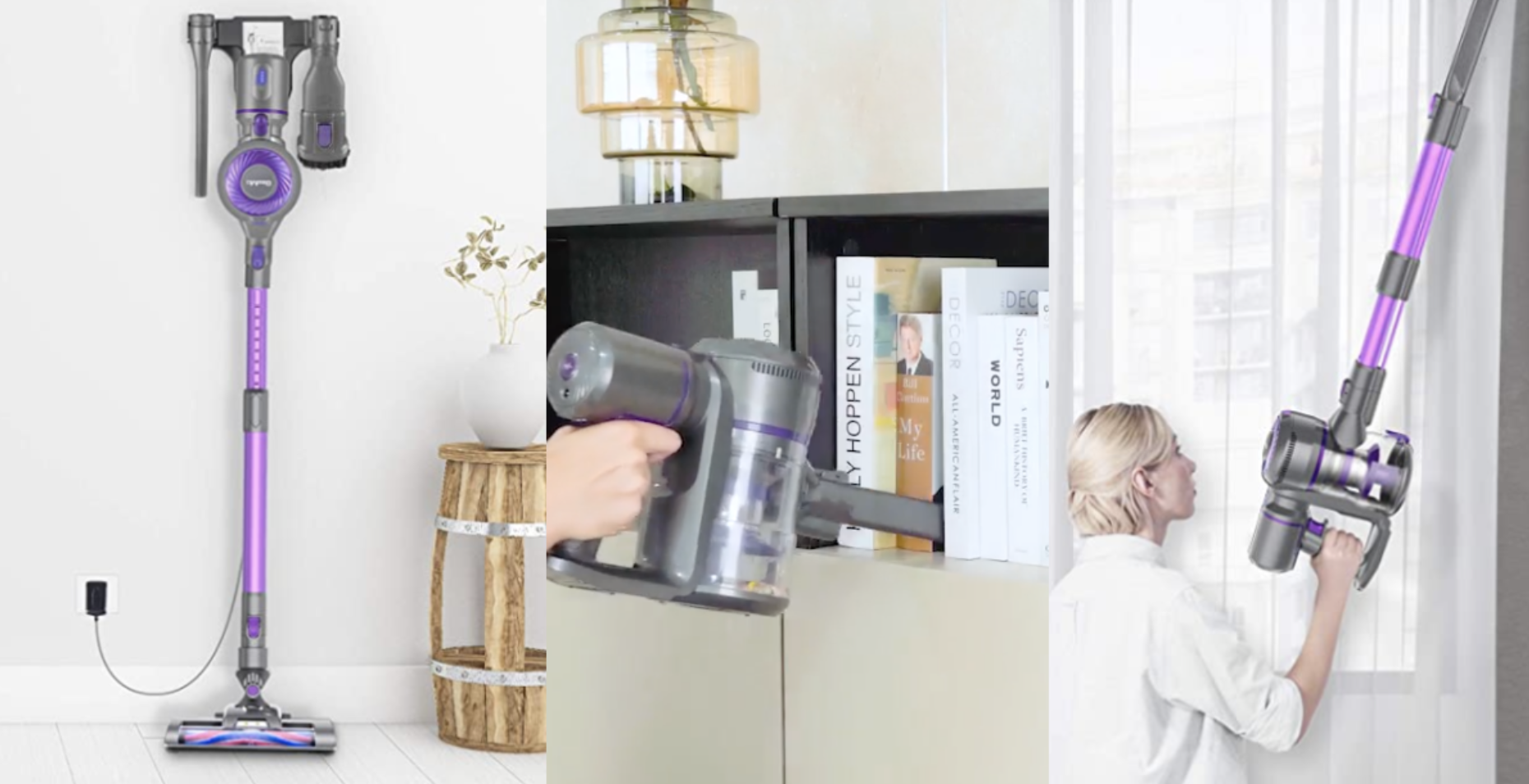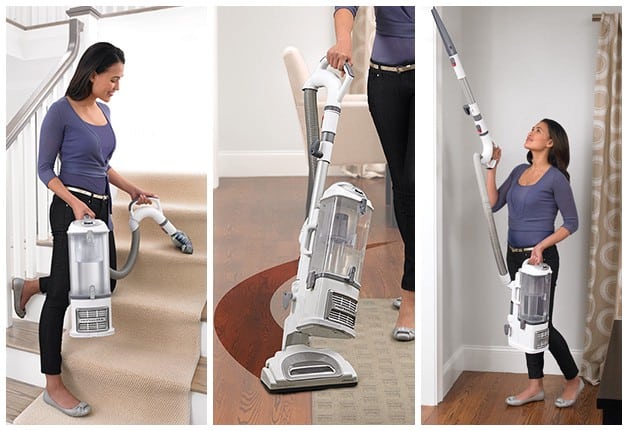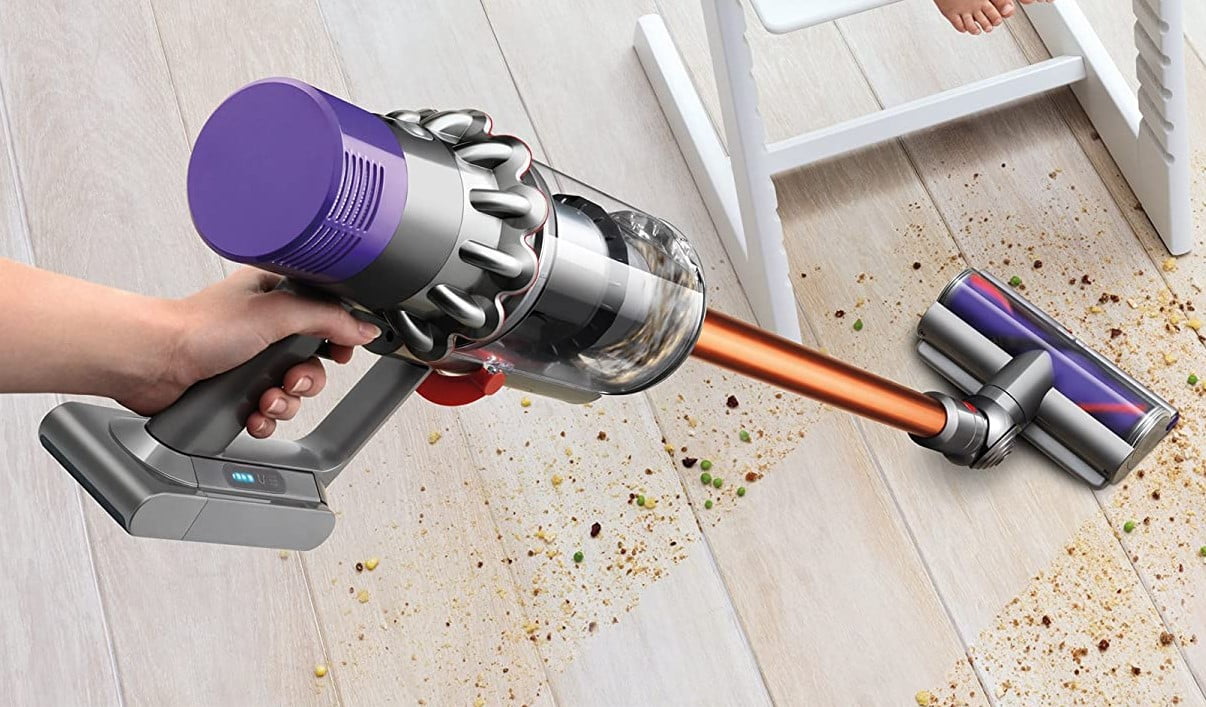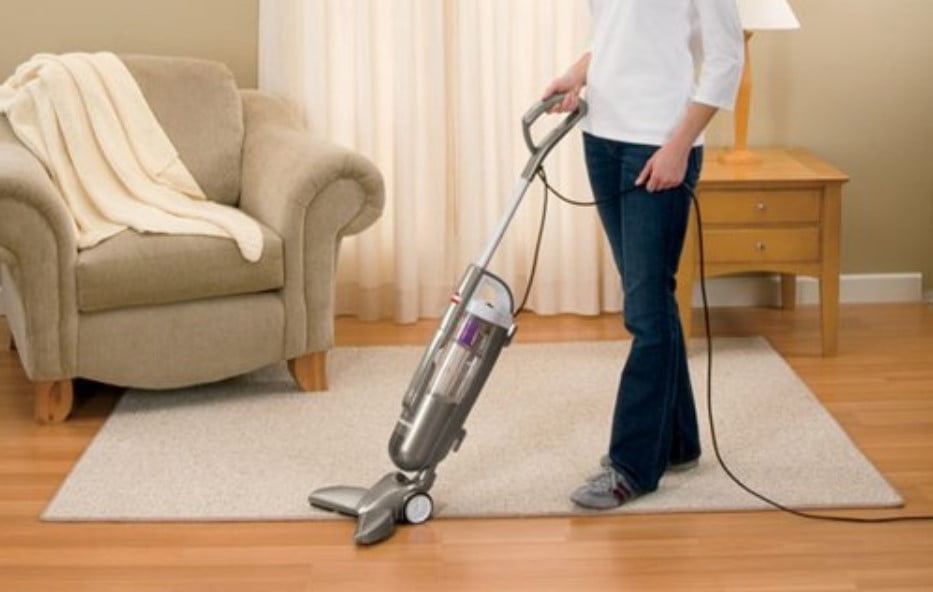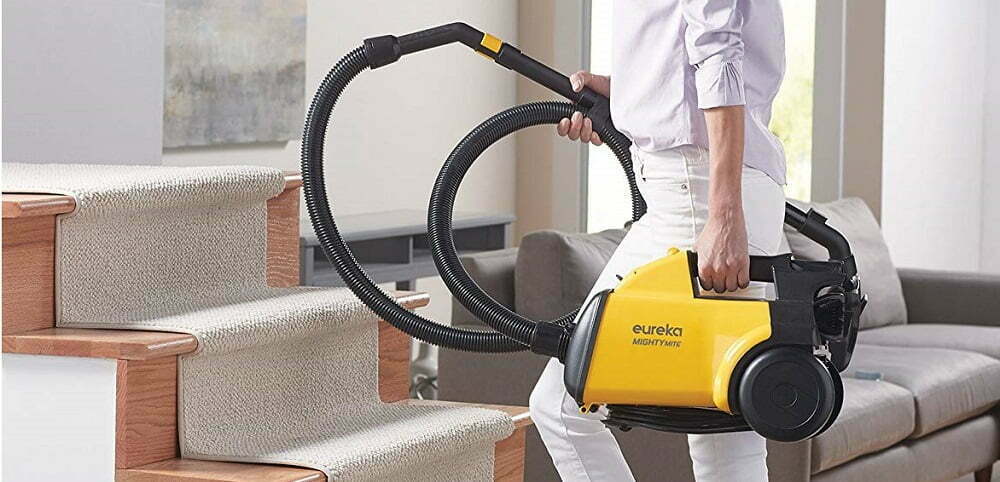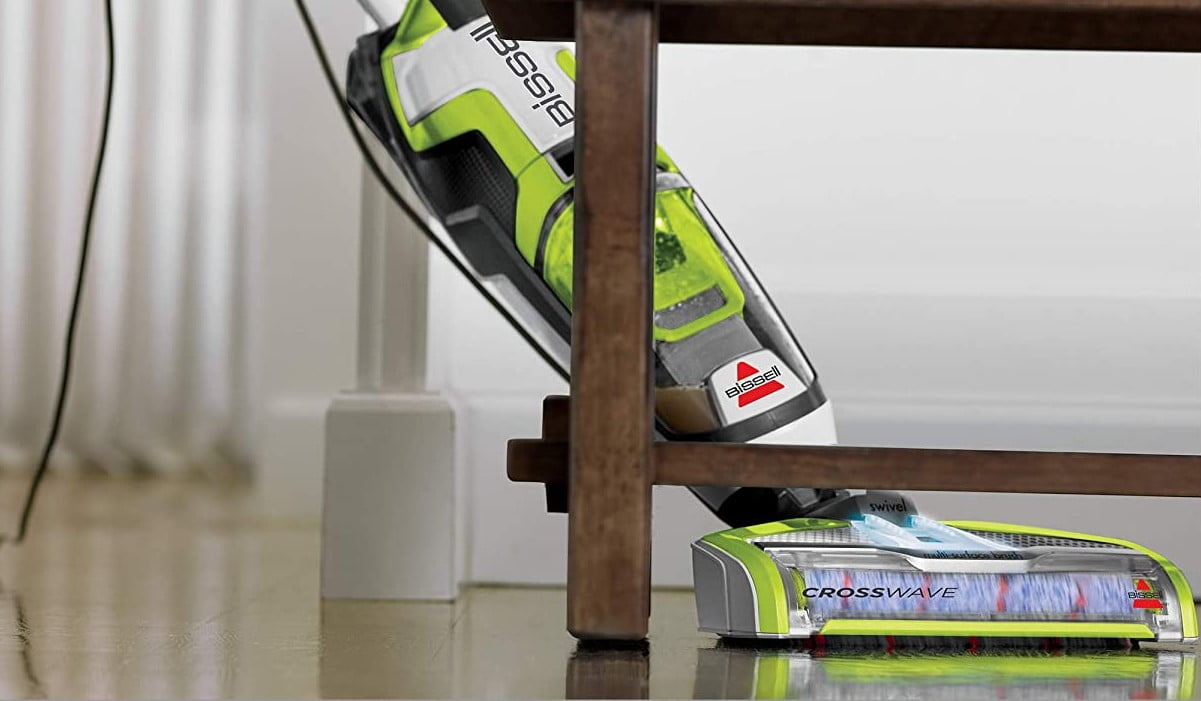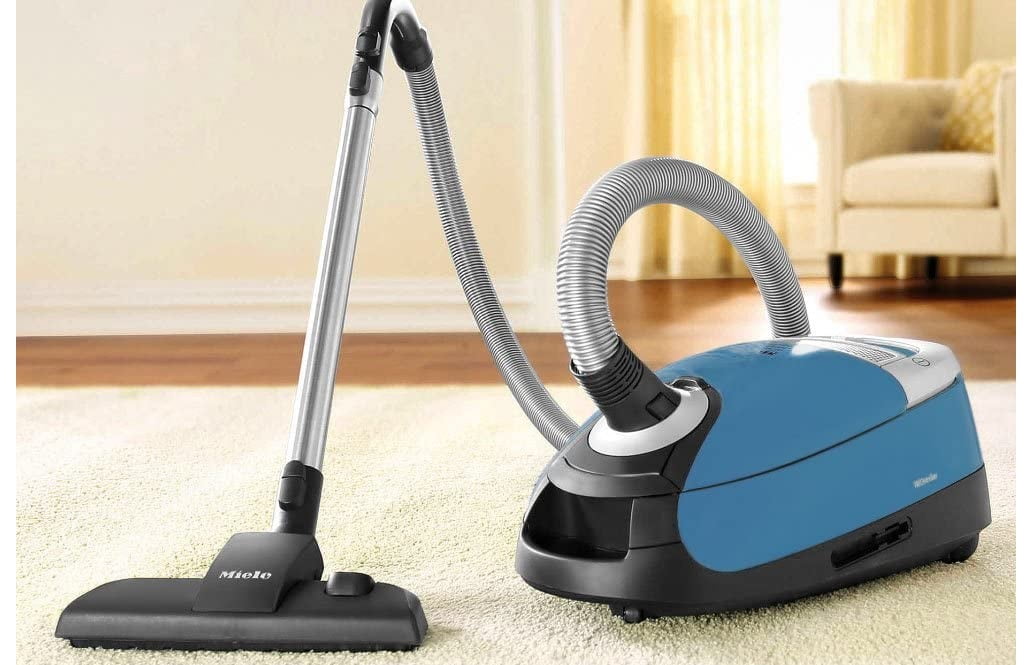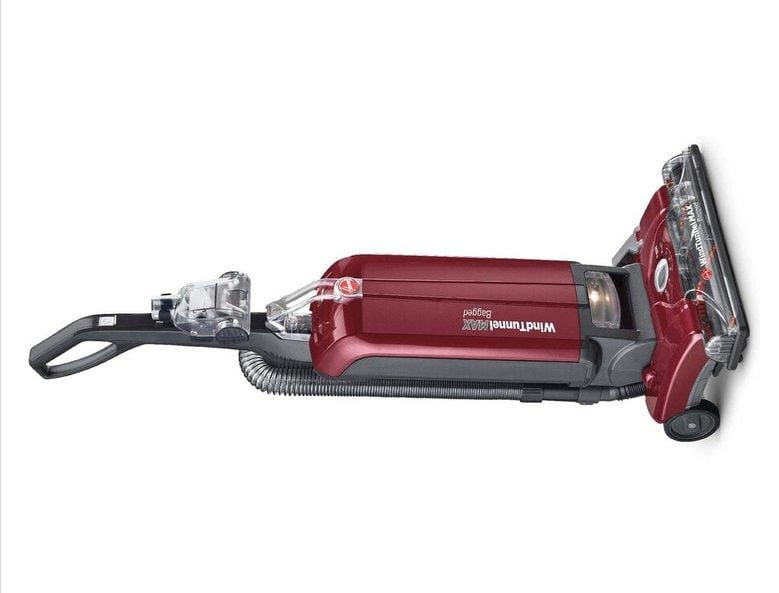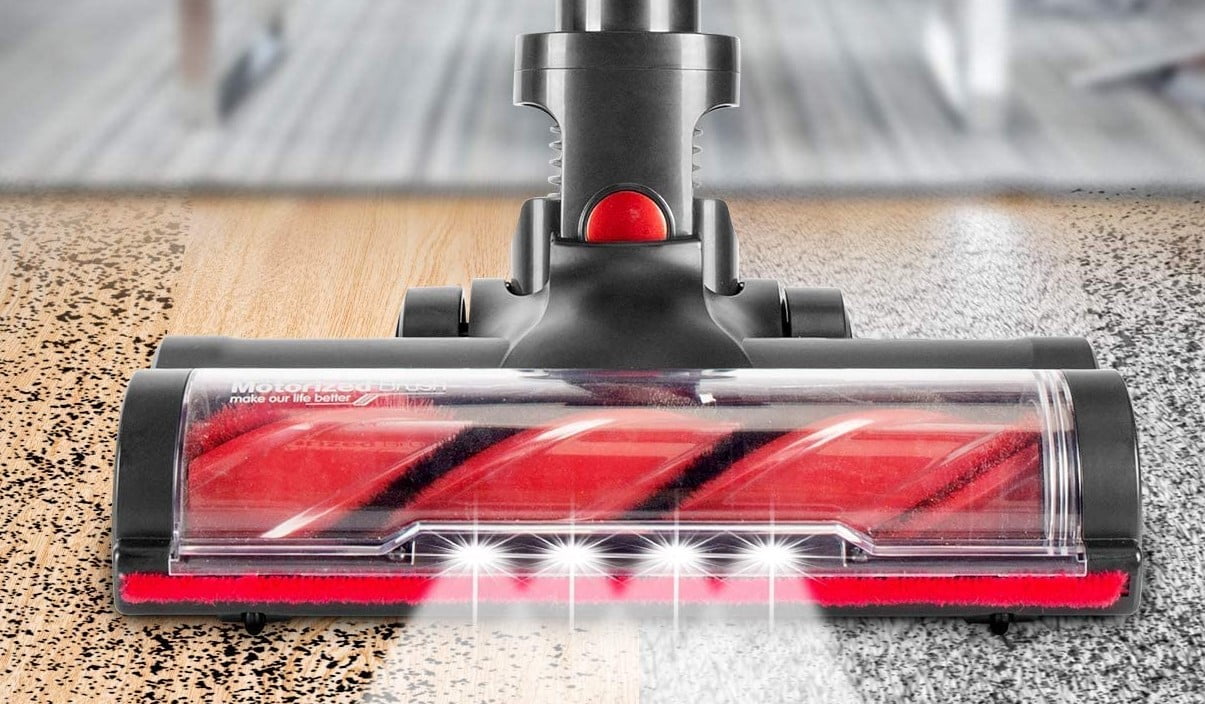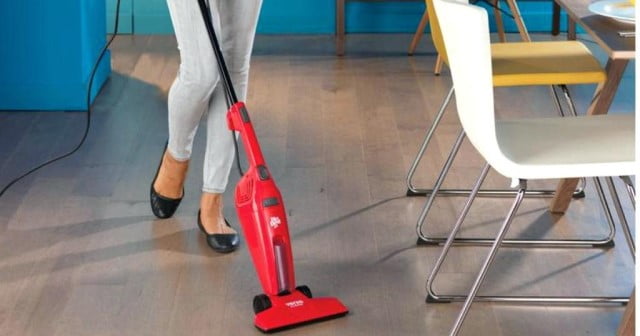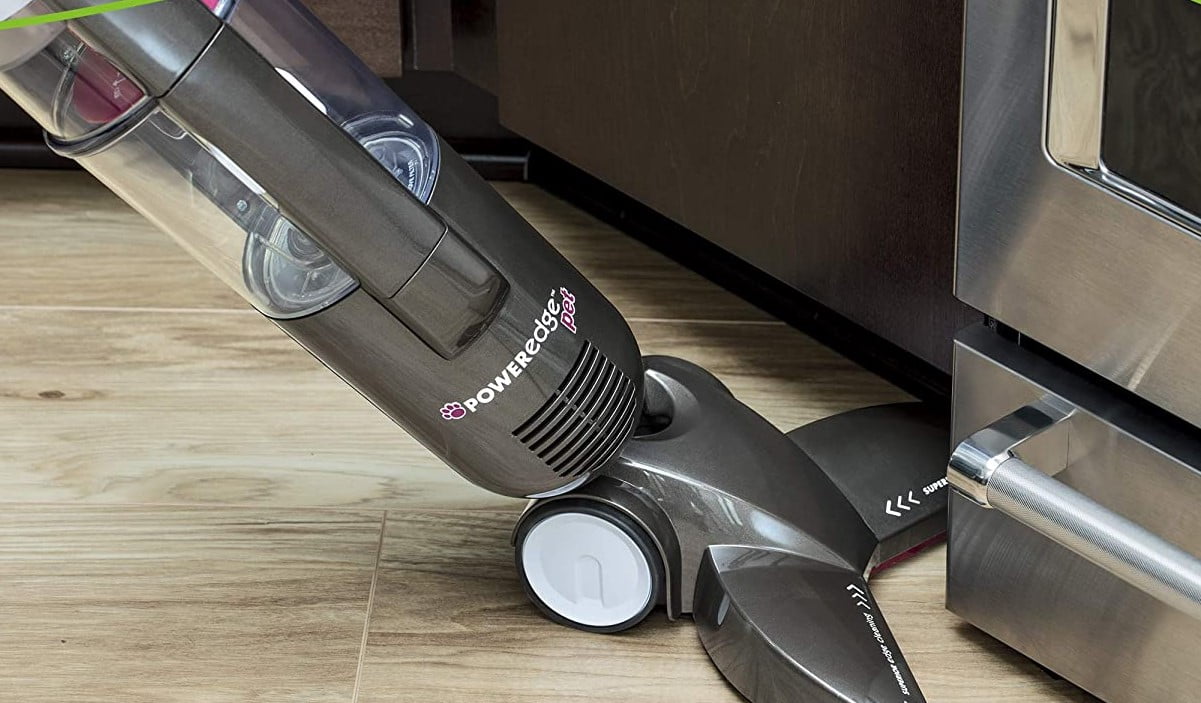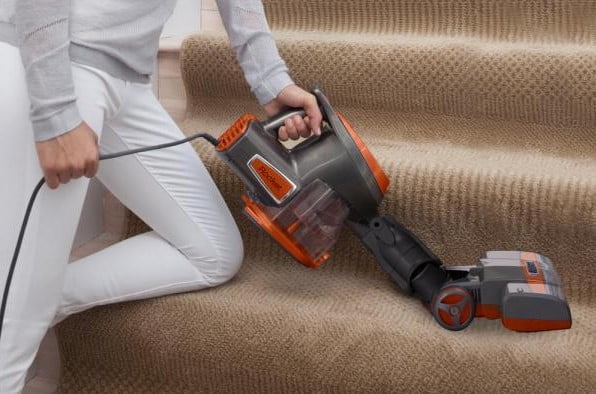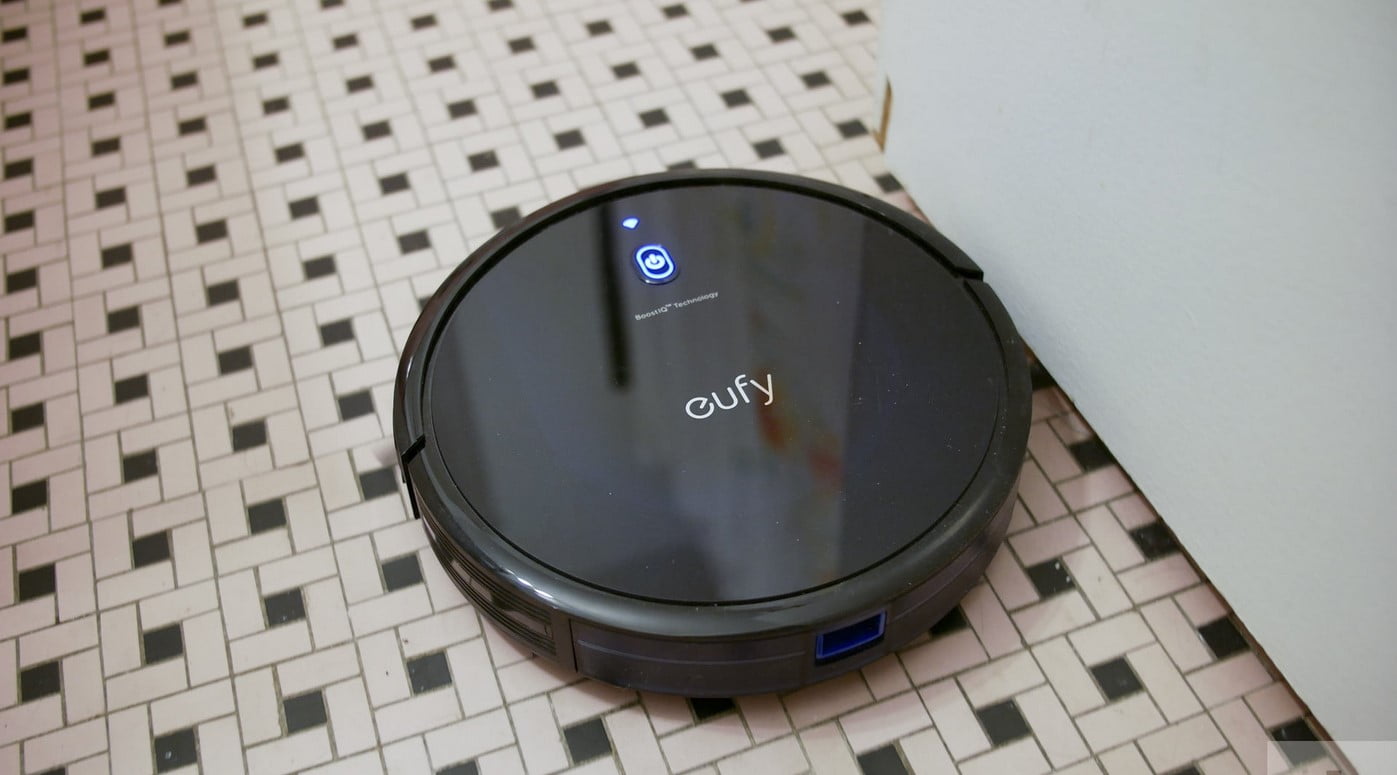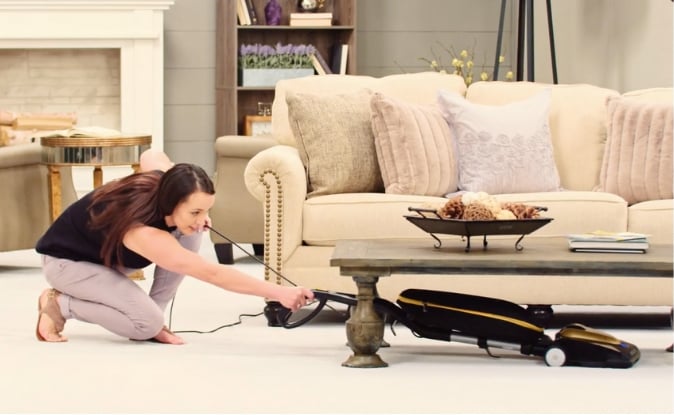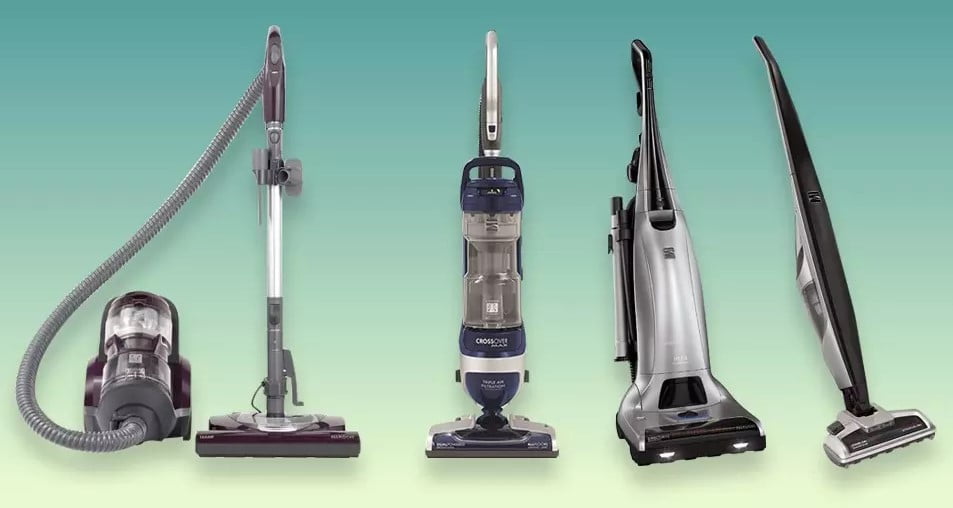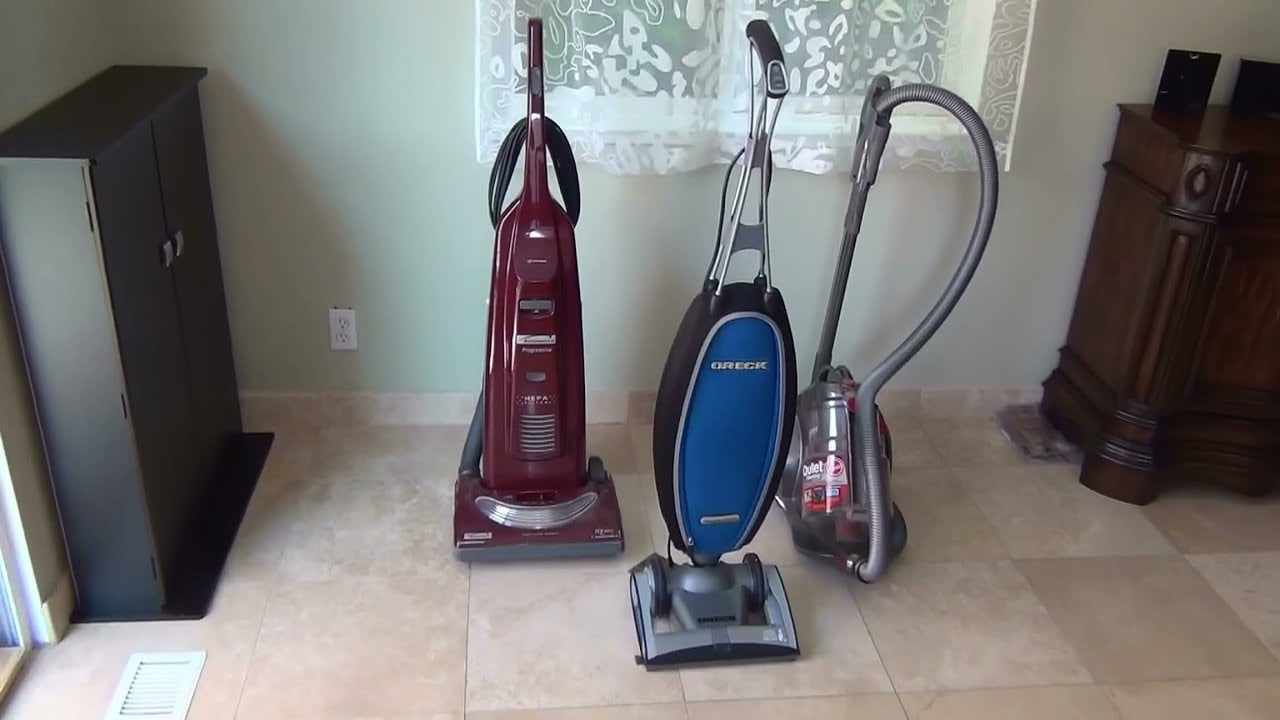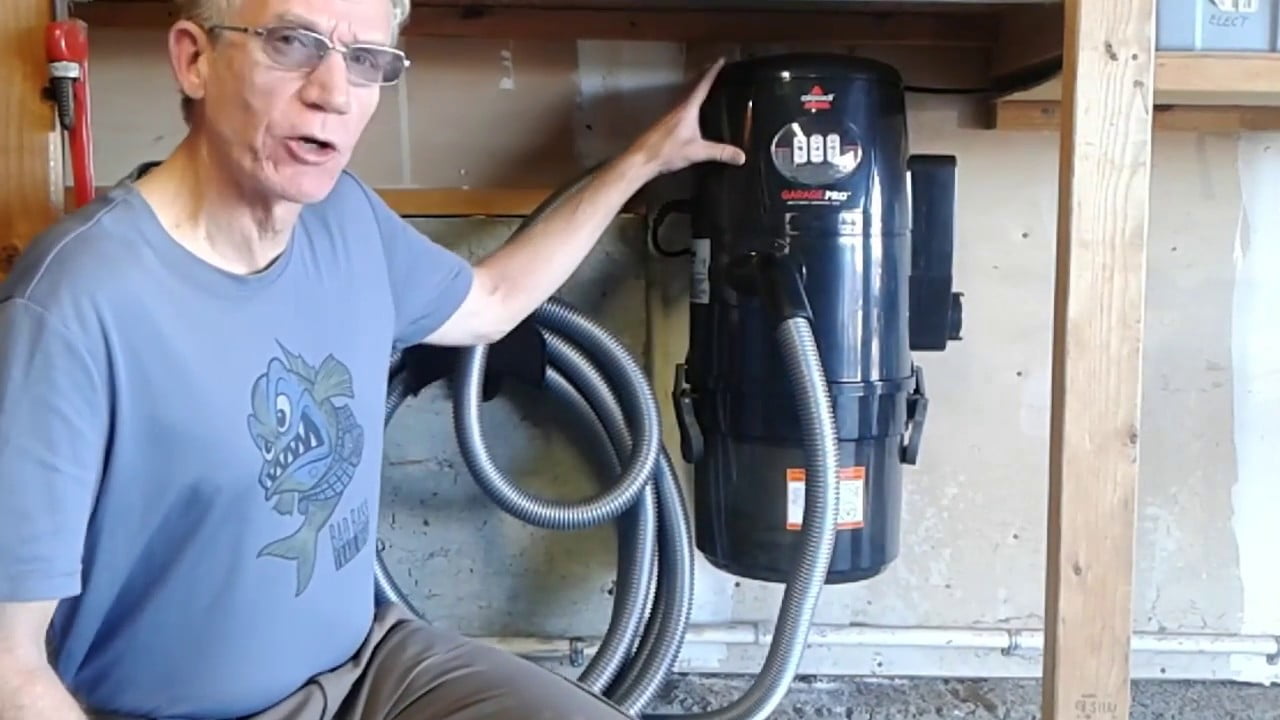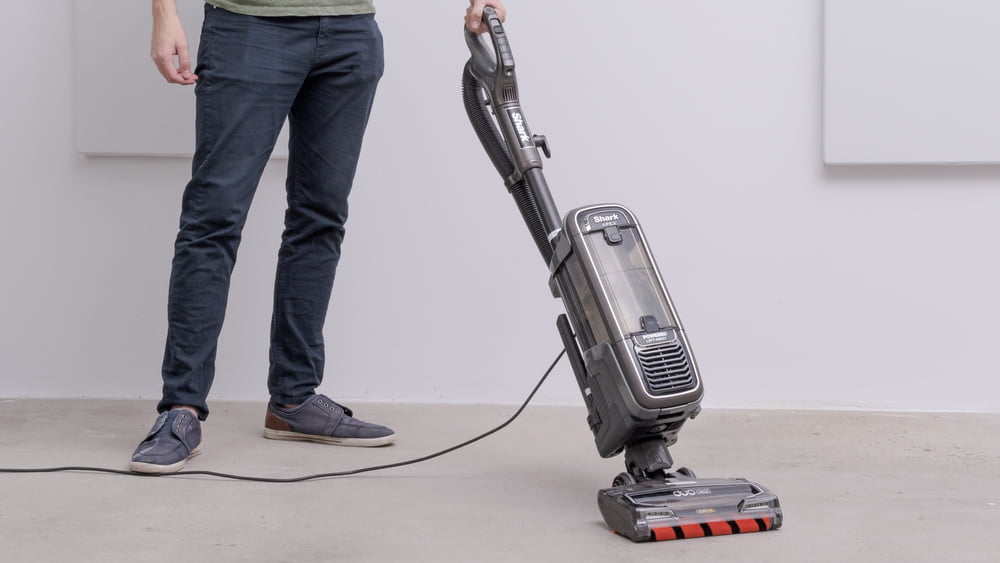If you’re shopping for the best vacuum for dust mites, there’s a good chance that you suffer from allergies. And more than likely microscopic dust mites might be part of the reason you can’t get any relief in your home. While most vacuum cleaners are effective at removing general dust, not all of them are equally useful for removing other known allergens from the home.
So more than anything, you’re going to want to look for a vacuum cleaner with a True HEPA filter. This is the only way you can be confident that not only is your vacuum trapping dirt, but also dust, dust mites, pet dander, and other contaminants, like mold and pollen, which can also aggravate allergies. But you’ll also want to ensure that the suction power is sufficient to capture mites.
Keep reading our best vacuum for dust mites buying guide to learn more. And if you prefer a different type of vacuum, check out our best vacuum cleaner buying guide.
Top Vacuums for Dust Mites
#1 Raycop Lite Handheld Allergen Vacuum Cleaner
Award: TOP PICK
WHY WE LIKE IT: It is a lightweight vacuum cleaner that comes with a HEPA filter to eliminate germs and has pulsating pads that help disintegrate debris to quicken the rate of absorption.
- Pulsating pads for easier vacuuming
- HEPA filter captures particles up to 0.3 microns in size
- UV light to kill bacteria
- Can get noisy
The RayCop Lite handheld allergen vacuum cleaner is a lightweight alternative that will eliminate up to 99% of bacteria and viruses when used for cleaning different surfaces around the house. The vacuum cleaner comes with a HEPA filter to capture particles that are up to 0.3 microns in size, and with pulsating pads that can vibrate up to 3,300 times when vacuuming, the whole cleaning process will be a lot easier and faster to complete since dirt and debris get loosened up for quicker suction. Still, some previous owners have complained of it being noisy.
A vacuum cleaner is a formidable tool against dust mites, and its use of UV light paralyzes dust mites by slowing down their ability to multiply. The handheld vacuum cleaner can remove up to 80% of dust mites after five minutes and up to 99% of bacteria after 10 seconds. It also eliminates up to 97.8% of pollen after 4 minutes and can get rid of smoke particles as small as one micron.
#2 LivePure Ultramite UVC HEPA Allergen Vacuum Cleaner
Award: HONORABLE MENTION
WHY WE LIKE IT: It is ergonomically designed and pretty easy to handle. Its Ultra Violet Light lamp activates when close to the cleaning surface, and since it also has a detachable bin cap, emptying it is also pretty easy to do.
- Light in weight
- HEPA filter that traps up to 98% of bacteria
- UV light for killing bacteria
- Not enough suction power
The Live Pure Ultramite Vacuum uses Ultra Violet Light to eliminate up to 98.1% of dust mites and bacteria. This best HEPA vacuum also has an extendable nose that makes it easier to get to hard-to-reach areas. It also includes a covered rolling brush that prevents scatter during vacuuming. Unfortunately, previous users complained that it does not have enough suction power.
The handheld vacuum cleaner is also designed in a very ergonomic manner and is pretty easy to handle. Its UV light also has a range sensor that activates only in 1.2 inches of the surface and a detachable bin that is very easy to empty once cleaning is done. Weighing only 6.4 pounds, the vacuum cleaner feels pretty light.
#3 Ergo Life Bed Vacuum Cleaner
We’re sorry, this product is temporarily out of stock
Award: BEST FOR ERGONOMIC DESIGN
WHY WE LIKE IT: It is ergonomically designed for easy handling and is lightweight and therefore easy to handle. Its pads can vibrate up to 8000 times per minute to disintegrate debris, and it also has a long 13ft cord for better maneuverability.
- Lightweight and easy to handle
- UV light for killing viruses and bacteria
- Long power cord for added flexibility
- Small capacity dust cup
This Ergo Life Bed Vacuum Cleaner boasts a powerful 350W motor that can generate a high-speed airflow and create a powerful suction force for efficient cleaning. The vacuum can vibrate up to 8000 times per minute to help disintegrate dust and debris without causing harm to the cleaning surface. Since it also comes with UV light sanitizer, it eliminates 99.9% of dust mites, bacteria, and viruses. Still, some users felt that its dust cup has a small capacity.
For easier handling, this bed vacuum cleaner comes with a 90° rotating handle that makes it easier to clean narrow spaces and a 13ft long power cord that makes it easier to reach far-flung areas that need cleaning. Weighing only 2.4 pounds, it is one of the lightest bed vacuums in the market and has a dust cup with a 0.2-liter capacity.
#4 Iris USA Mattress Vacuum Cleaner
Award: BEST DUST SENSING MECHANISM
WHY WE LIKE IT: Owners will know how clean their environment is, and since it is also lightweight, moving it around shouldn’t be difficult.
- Double filtration
- Has sensors that depict level of cleanliness
- Very light in weight
- Somewhat bulky
The Iris USA Mattress Vacuum Cleaner is a powerful bed mattress cleaner with a broad cleaning head, allowing owners to cover a larger surface area and finish cleaning faster. The agitator can vibrate up to 6000 times per minute, ensuring pollen, dust, and mites get vacuumed up quickly and efficiently. Weighing only 3.5 pounds, it’s relatively easy to handle. However, its bulky shape may leave some users unimpressed, so you’ll need to judge it if you’re buying a great vacuum for elderly folks.
This high-power mattress vacuum cleaner comes with a sensor that can detect the level of dust on a surface and relay its findings in color codes. When it lights up as red, there is a lot to clean, yellow marks a significant level of improvement, and green means the surface is clean. The cleaner offers two levels of filtration where there is an air filter and a dust filter. Its dust cup has a capacity of about 0.2 liters, and since it is washable, it is pretty easy to maintain.
#5 Dorvin Handheld Vacuum Cleaner
Award: BEST DUST CUP CAPACITY
WHY WE LIKE IT: It has a high-powered motor for good suction power and an efficient filtration system that traps both dirt and debris. Its dust cup capacity is also relatively large, and its pulsating brush also ensures that there aren’t any blind spots left behind when cleaning.
- Relatively large dust cup capacity
- High suction power
- Ergonomic design
- No UV light lamp
The Dorvin Handheld Vacuum is an easy-to-use household cleaner with a 350-watt motor and a relatively high suction power of up to 12kpa. Its HEPA filtration system can remove up to 99.7% of microscopic particles that are up to 0.3 microns in size. With a power cord that is up to 4m in length, it offers a decent range of flexibility for general cleaning. The vacuum cleaner also has a relatively large dust cup of about 0.4 liters. However, its lack of a UV light lamp might have rendered insufficient by some users.
This vacuum cleaner is ideal for cleaning a wide variety of surfaces. Since it also has a uniform NANO brush with a slight curvature for general cleaning, users will also be able to have it clean all around their surfaces without leaving any spots.
#6 Dibea Bed Vacuum Cleaner
Award: BEST FOR ELABORATE FILTRATION
WHY WE LIKE IT: It has a filtration system consisting of six stages and features a UV light bulb to kill germs and bacteria. It’s got decent sucking power and a dust cup that’s pretty easy to empty.
- Elaborate filtration process
- Easy to empty dust cup
- Relatively light and easy to maneuver
- Some may find it noisy
This Dibea Vacuum Cleaner is a one-stop solution to making sure that users can clean up their beds, couches, pillows, and other fabrics, and since it also comes with a UV light bulb, it can kill off germs and bacteria from different surfaces. The cleaner also has an elaborate filtration system consisting of six stages, and once complete, the remnants are pushed into a small dust canister for emptying later on. Still, some have complained that it is quite noisy to use.
Weighing only 5.35 pounds, the Dibea Vacuum Cleaner is pretty light and is relatively easy to handle. It also has a small roller brush that will quickly pick up dust and debris from any cleaning surface, and because of the shape of its head, it can be used to maneuver around tight and narrow spaces.
Beginner’s Guide to Vacuums for Dust Mites
What is a Vacuum for Dust Mites?
A vacuum for dust mites is one that’s specifically designed with powerful suction and a True HEPA filter. When combined, these two features are effective at properly removing and trapping dust mites, which can cause allergic reactions in many people.
The True HEPA filter is a critical component, as only True HEPA can trap 99.97% of dust, including dust mites. These filters are known to prevent items as small as 0.3 microns from escaping. Meanwhile, powerful suction means that you can effectively draw particles into the vacuum.
Vacuums for dust mites can come in a variety of styles, including upright, stick, or canister models. Similarly, you can find bagged and bagless modes, as well as corded and cordless models. And they can also be effective for other needs, such as the best vacuum for concrete floors or for the leading vacuum for cat litter, which can be a mess to keep out of the carpet.
Vacuums for Dust Mites vs Other Vacuums
There is little difference between a dust mite vacuum cleaner and other vacuums. While it’s rare to find a vacuum specifically marketed as a “dust mite vacuum,” you’ll find that the appliances in this category that are most effective at eliminating dust mites will all contain True HEPA air filters. As mentioned previously, a True HEPA filter can effectively remove 99.97% of particles, even at sizes as small as 0.3 microns. This means that these would also be the best vacuums for fleas.
This also translates to a more thorough cleaning process that removes allergens such as dust mites from surfaces. Normally these types of vacuums will be promoted as allergy-approved or feature a seal of approval from a third-party independent organization, such as the Asthma and Allergy Foundation of America (AAFA) or the equivalent from other countries.
Along with a sturdy True HEPA filter, you’ll usually find that allergy-friendly vacuums will also offer powerful suction. This is essential as depending on the included attachments (if any), you’ll want a device that can effectively remove dust mites not just from your floors but other surfaces in the home as well. More importantly, a True HEPA filter also ensures that contaminants aren’t released back into the air through the outtake vents on your vacuum.
While you can find bagless vacuums with True HEPA filters and powerful suction, most experts will recommend that you stick to bagged models instead. This is because it reduces the chances of allergens and pollutants being released back into the air when emptying the bin.
How Vacuums for Dust Mites Work
Vacuums designed to tackle dust mites work exactly like other vacuums — just with different filters and enhanced suction. Dust mites are microscopic. Not only can they be found on your floors, but can also be on or on other surfaces in your home, including softer materials like curtains, couches, and bedding.
So, you must have a vacuum with enough suction power that can effectively draw them out and trap them. Similarly, the True HEPA filter is another key feature that ensures dust mites and other common allergens aren’t released back into the air while operating your vacuum.
Many vacuums experience what’s known as blowback, where particles sucked into the appliance can be expelled back into the environment through exhaust vents. While this is normally due to improper canister installation, a vacuum with a basic filter can also be a culprit. With an allergy-approved vacuum, a True HEPA filter traps particles as small as 0.3 microns — which includes dust mites.
Why You Should Buy a Vacuum for Dust Mites
In truth, everyone can benefit from a vacuum designed to tackle allergens. But obviously, anyone who specifically struggles with dust or animal dander allergies should make this type of vacuum a priority.
Is a Vacuum for Dust Mites Worth Having?
- You Have a Dust Allergy: If you struggle with dust allergies, just accept that dust mites are also a known trigger. Having a vacuum that effectively removes both irritants is essential.
- You Want a Thorough Clean: Because vacuums targeted for allergies tend to have stronger suction, you’ll also get a better cleaning experience. This can translate to making fewer passes over the same spots, which means you can finish vacuuming your floors faster.
- You Also Want to Target Other Common Allergens: While dust is a common trigger for allergies, other ones which are effectively trapped by True HEPA filters include pollen, mold, and of course, pet hair and dander.
Why a Vacuum for Dust Mites May Not Be for You
- You Don’t Have a Dust Allergy: While you probably still shouldn’t live in a dust-covered home, if you don’t specifically have a dust or dust mite allergy, you might find that a True HEPA filter isn’t quite as important.
- You Have an Air Purifier: As we mentioned earlier, dust mites don’t solely spend their time on the floor. They can also be on surfaces, in soft materials, and floating in the air. For someone concerned about breathing in dust mites or dust, an air purifier, especially a PECO or Molekule model is incredibly effective at eliminating both irritants.
- You Employ a Cleaning Service: While it’s still probably a good idea to have some kind of vacuum in your home, if you hire a service that regularly cleans your home, you might feel like an allergy-focused vacuum is unnecessary.
How Long Will a Vacuum for Dust Mites Last?
Most vacuums have a general lifespan of around eight years. This assumes that you’re using your vacuum regularly. But in truth, individual experiences can vary widely and are dependent upon a wide range of criteria.
For example, someone who runs their vacuum multiple times a day might have to replace it more frequently than someone who vacuums once daily. Similarly, the total run time per vacuuming session is also a factor. For that reason, people with larger homes may find that getting eight years of use from a vacuum is more difficult than someone who lives in a studio apartment.
And of course, user error and behavior will also be an influence. Being unnecessarily rough with your vacuum, or attempting to suck up large debris that clogs the hose are going to significantly age your appliance. Likewise, failing to regularly clean your vacuum — both internal components and the exterior — can shorten the lifespan.
How to Choose a Vacuum for Dust Mites
The two most important factors that you need to prioritize when shopping for a vacuum cleaner that effectively removes dust mites are powerful suction and a True HEPA filter. Meanwhile, you still want to think about issues such as vacuum style, canister capacity, or whether or not there are attachments.
Best Vacuums for Dust Mites Factors to Consider
1. Is there a True HEPA filter?
If you have a dust allergy, anything less than a True HEPA filter isn’t going to be sufficient. Dust particles — and by extension dust mites — are small. True HEPA filters are proven to trap 99.97% of particles including those as small as 0.3 microns. This means that you don’t have to be concerned about dust and other microscopic particles blowing back into the air as you vacuum.
2. Is the suction powerful enough?
Again, dust is small and dust mites are microscopic. So, poor suction simply means that your vacuum isn’t effectively removing allergens from the floor. Worse still, a vacuum with lackluster suction also translates to more time spent cleaning as you’ll have to pass over the same section of floors multiple times to thoroughly clean them.
3. What vacuum style do you prefer?
It’s possible to find allergy-approved vacuums in the canister, stick, upright, and even robotic form. There’s no right or wrong option, it comes down to your preferences. Stick models are ideal for smaller homes that don’t need to clean large areas. Meanwhile, a canister can be a more portable option for multi-level homes. And robotic vacuums are perfect if you dislike vacuuming and would rather return to a clean home after work.
4. Do you want a bagged or bagless vacuum?
Officially, experts tend to recommend a bagged vacuum if you have allergies. This is because there’s less of a risk of releasing pollutants back into the air when you replace the bag versus emptying a canister. However, regardless of which model you pick, allergy specialists recommend that everyone replace bags or empty canisters outside to reduce the risk of exposure.
5. Do you want a corded or cordless model?
This will again come down to preference and there’s no right or wrong answer. However, if you have a large area to clean — such as in a bigger home — corded vacuums offer endless power. In contrast, smaller homes or people that only need to vacuum a few select sections can benefit from the enhanced mobility a cordless vacuum offers.

![Best Vacuums for Dust Mites in [year] 1 best vacuum for dust mites](https://www.gadgetreview.dev/wp-content/uploads/best-vacuum-for-dust-mites-image.jpg)


![Best Vacuums for Dust Mites in [year] 2 RAYCOP LITE UV Sanitizing HEPA Allergen Vacuum...](https://m.media-amazon.com/images/I/31sDkmkDJPL._SL160_.jpg)
![Best Vacuums for Dust Mites in [year] 3 LivePure - Ultramite Handheld HEPA Filter Vacuum &...](https://m.media-amazon.com/images/I/4150kSBwpUL._SL160_.jpg)
![Best Vacuums for Dust Mites in [year] 8 Our #4 Pick is the Iris USA Mattress Vacuum Cleaner](https://m.media-amazon.com/images/I/310yIFXedQL._SL160_.jpg)
![Best Vacuums for Dust Mites in [year] 10 Our #5 Pick is the Dorvin Handheld Vacuum Cleaner](https://m.media-amazon.com/images/I/41opINupg6L._SL160_.jpg)
![Best Vacuums for Dust Mites in [year] 11 Our #6 Pick is the Dibea Bed Vacuum Cleaner](https://m.media-amazon.com/images/I/417ijAESkIL._SL160_.jpg)


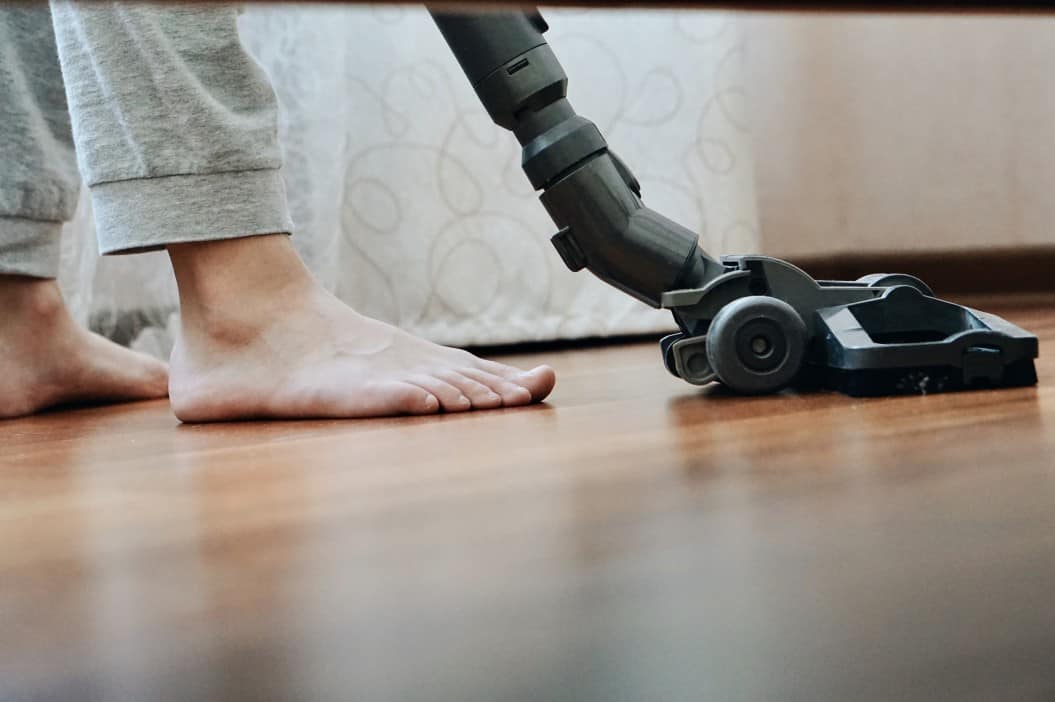
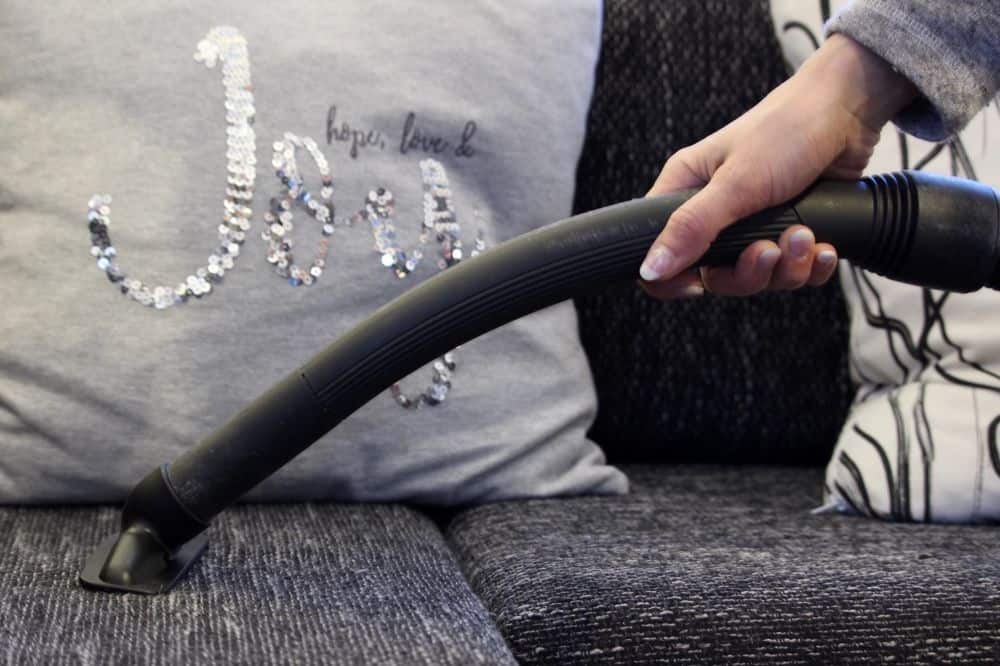
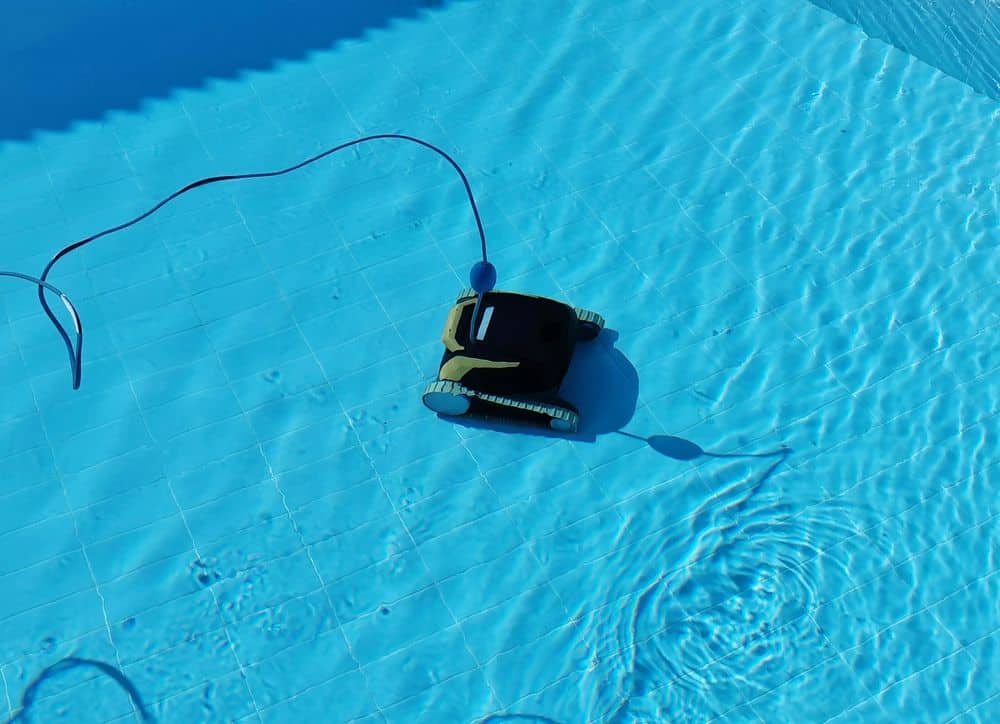
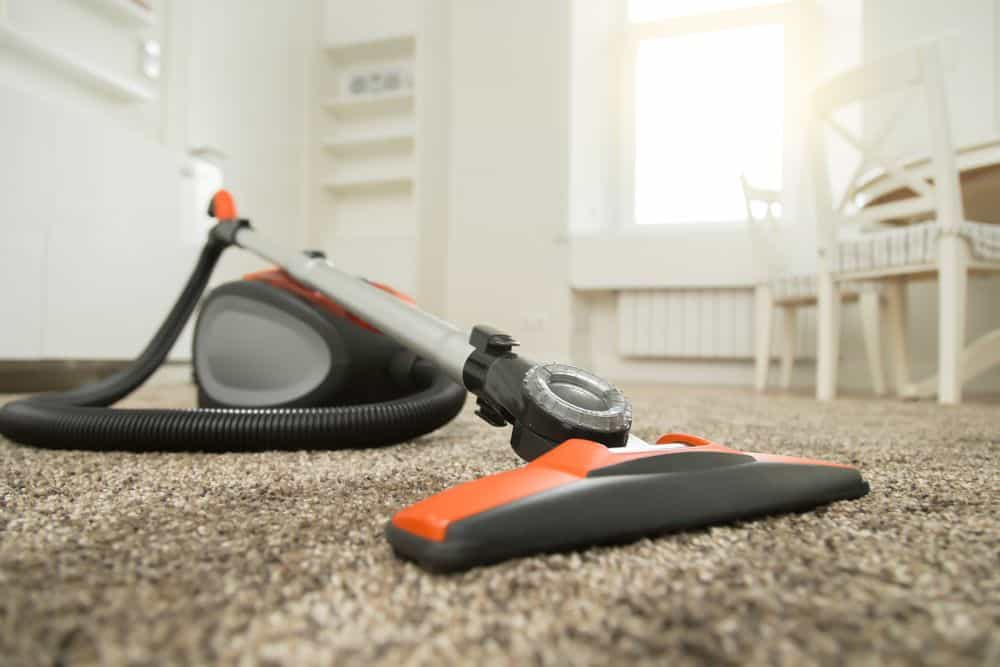
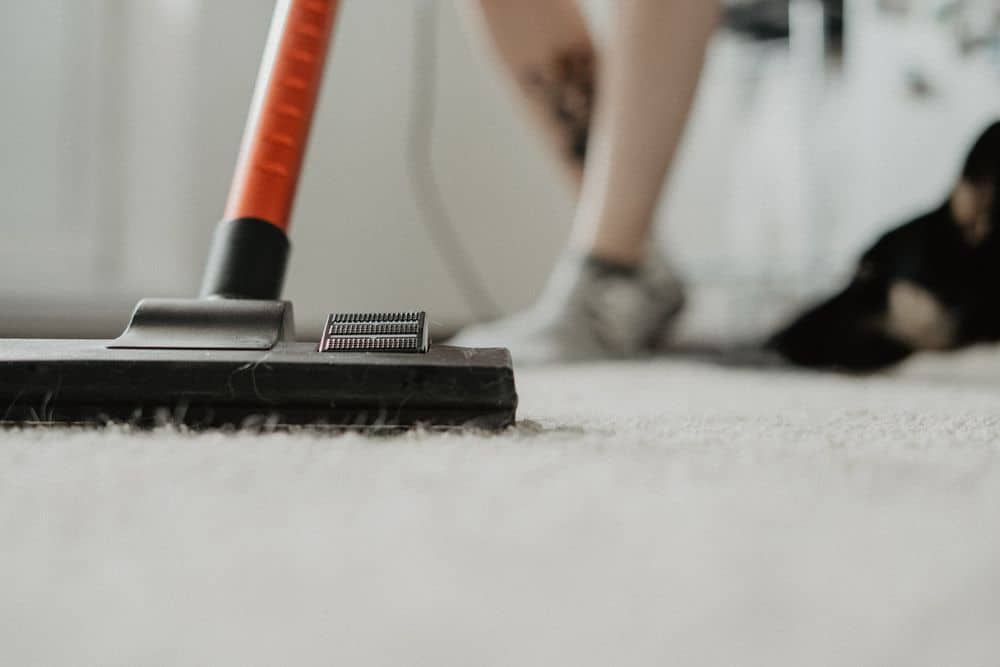
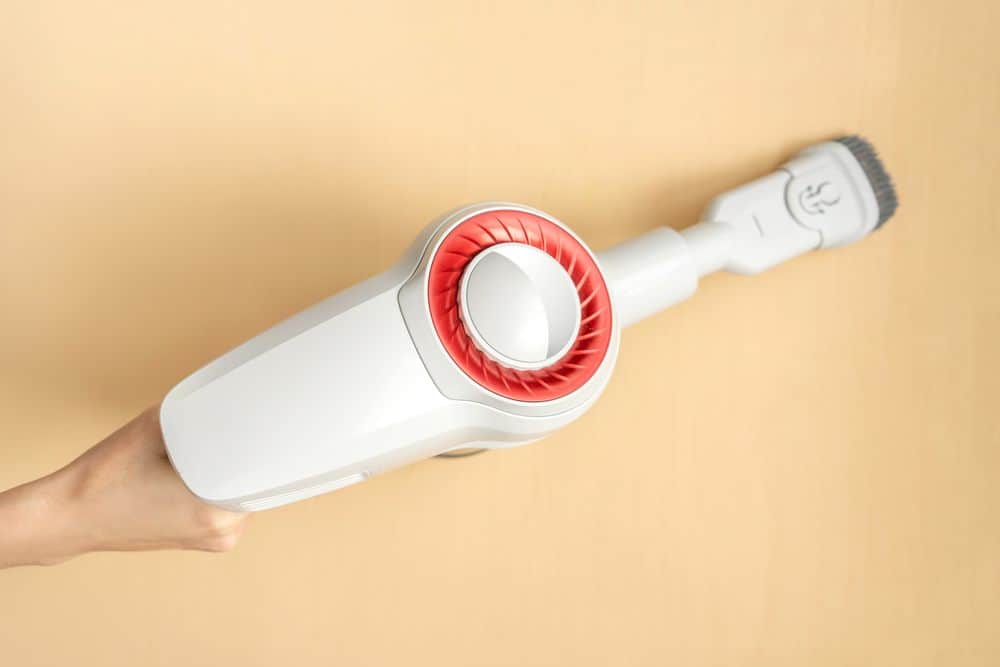
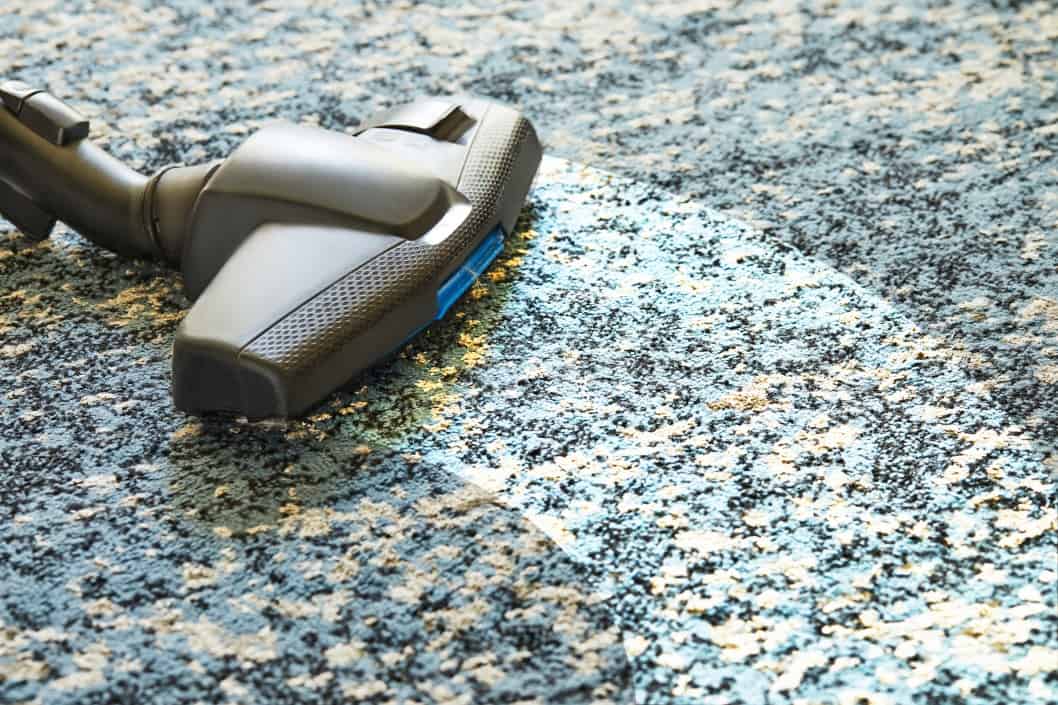
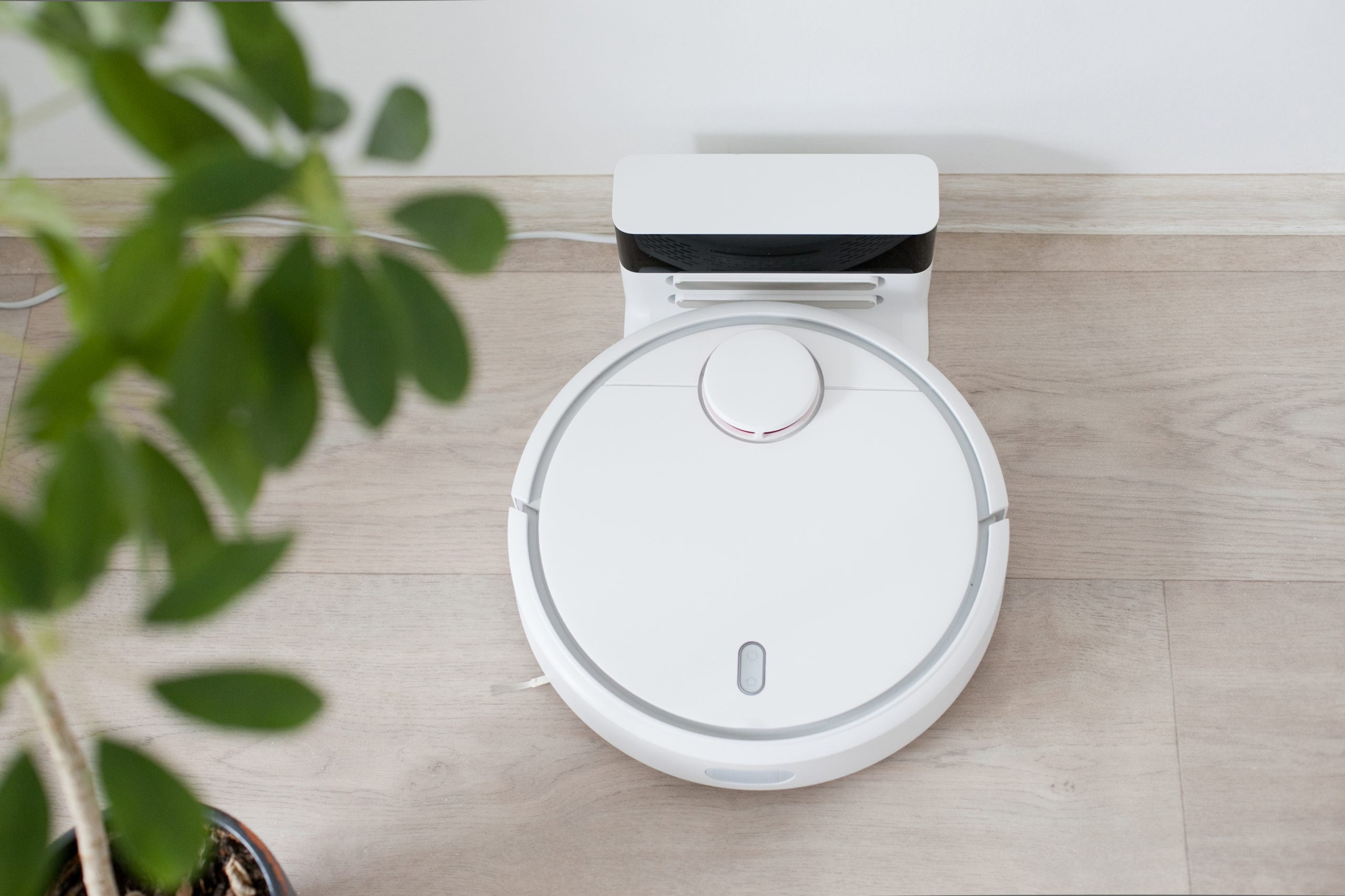
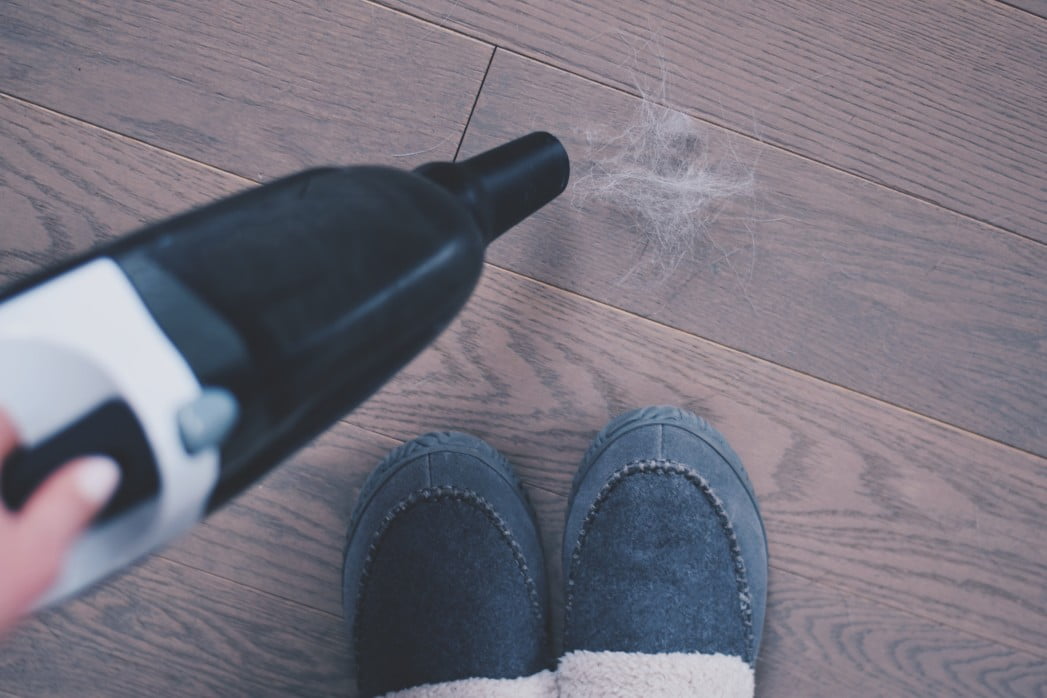
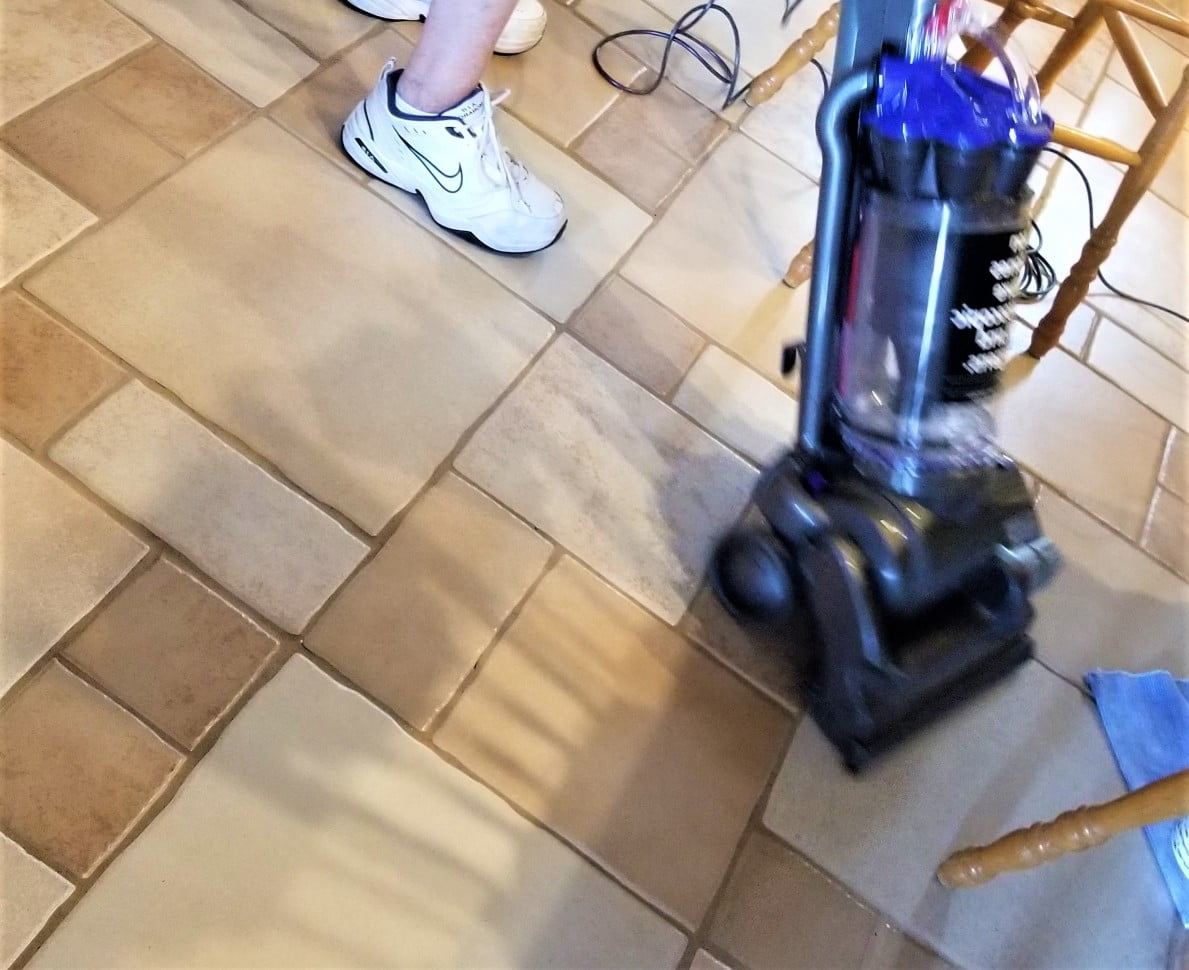
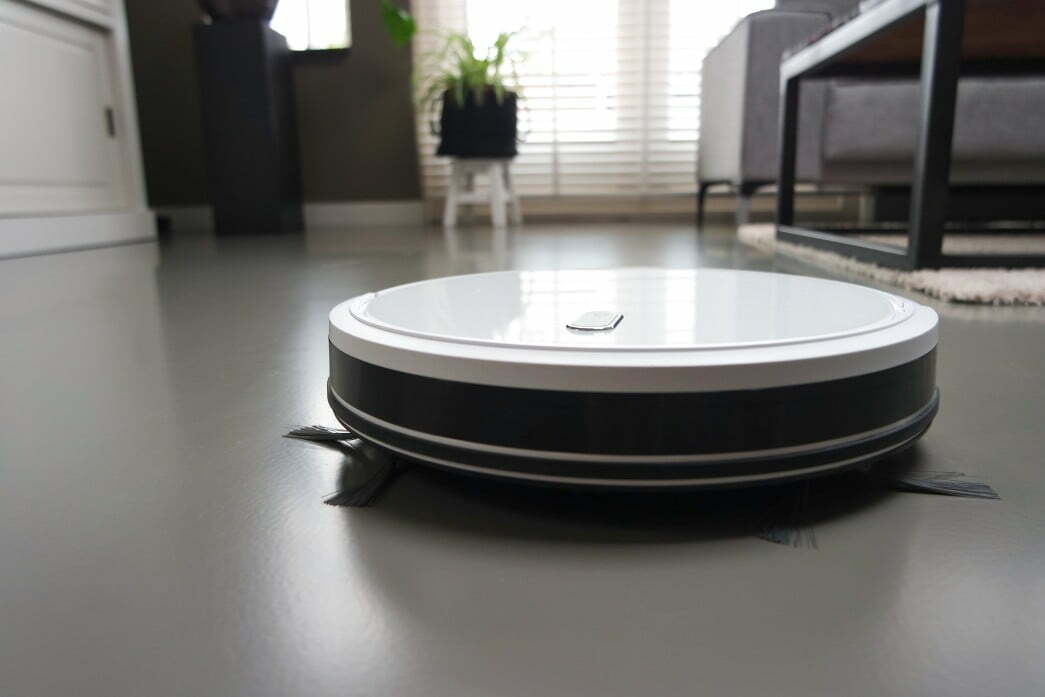
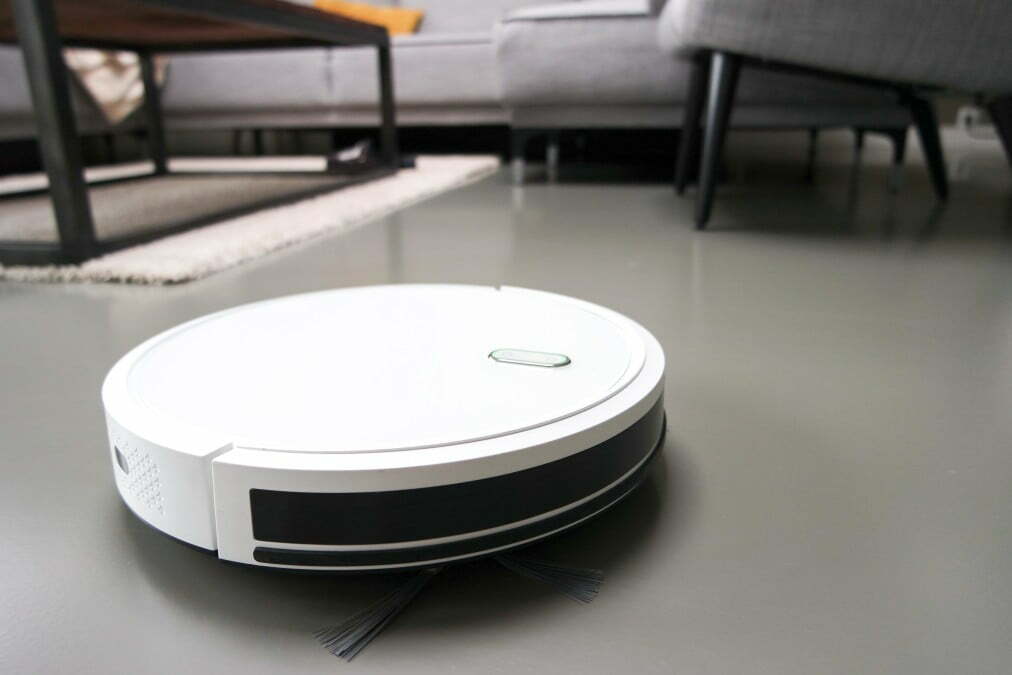
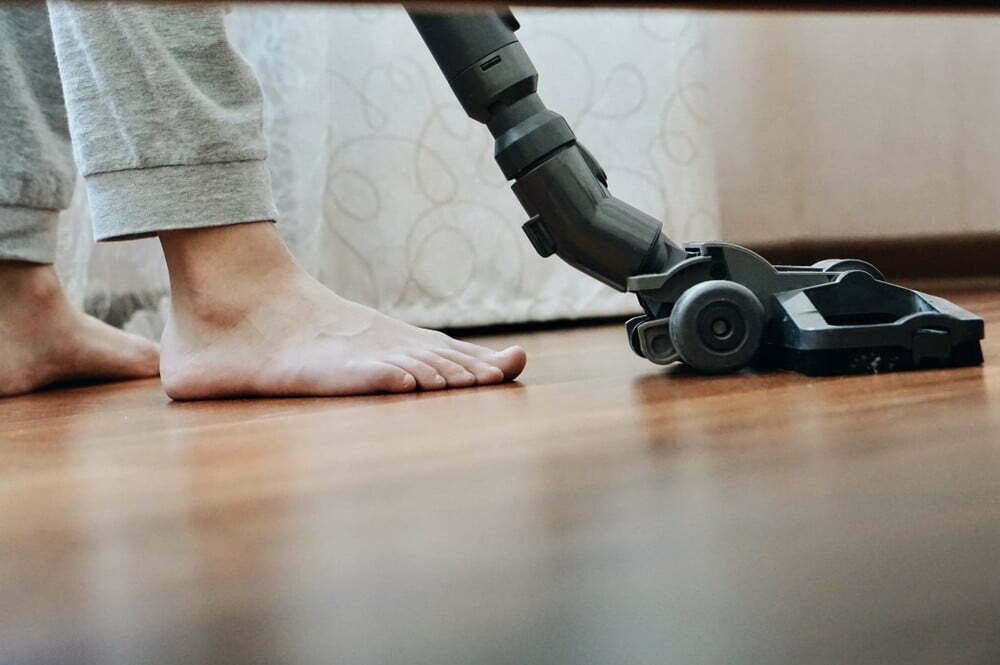
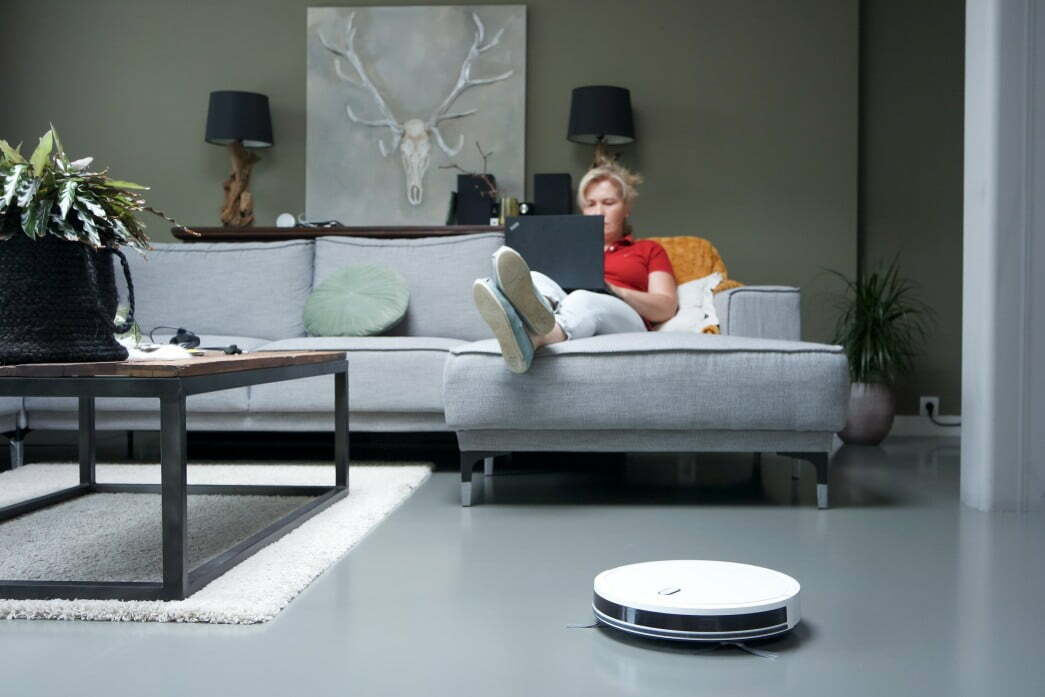
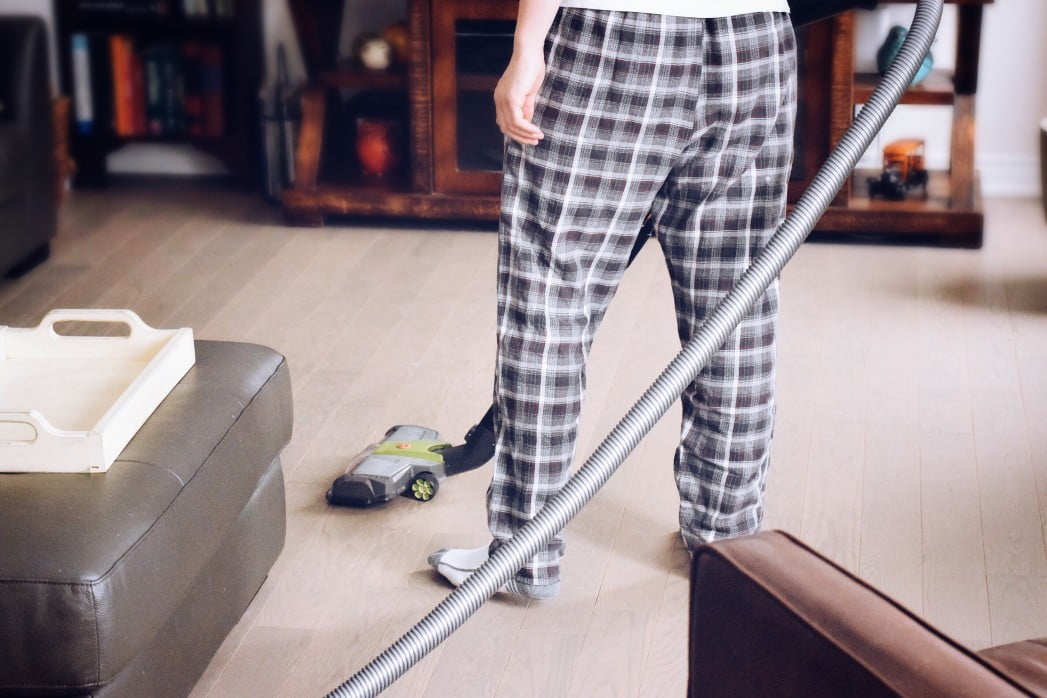
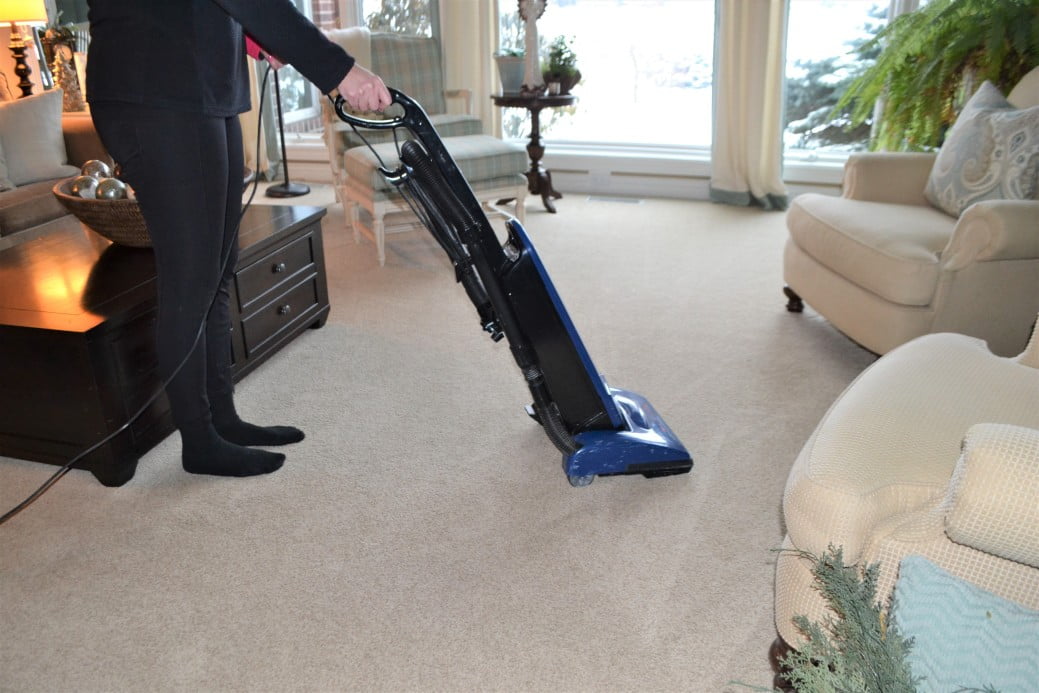
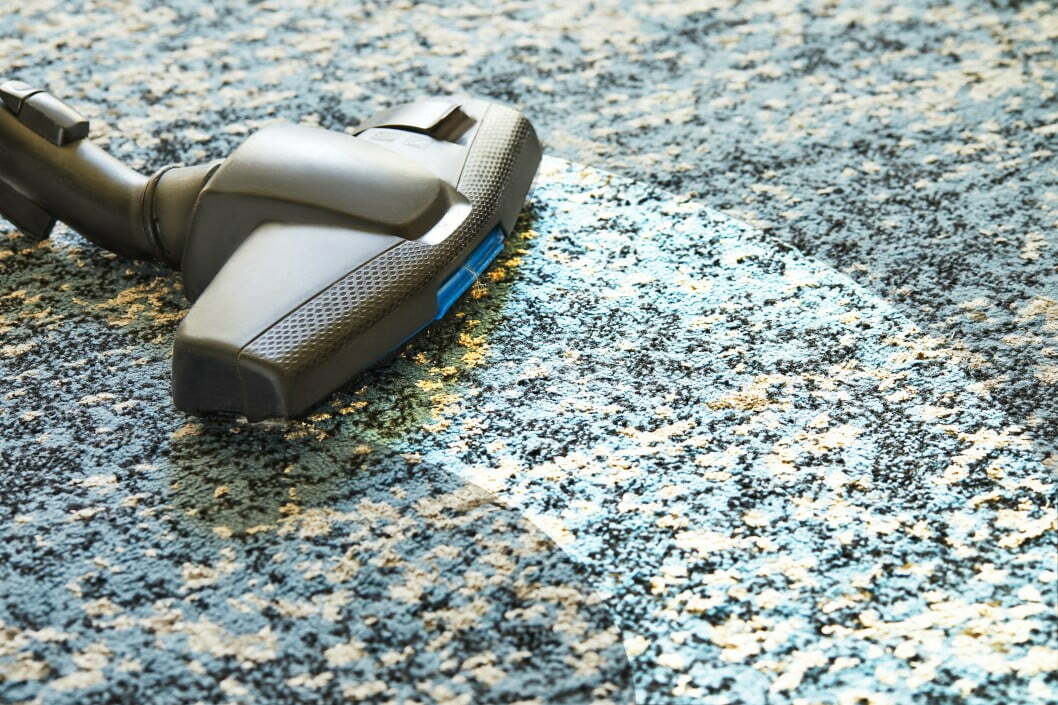
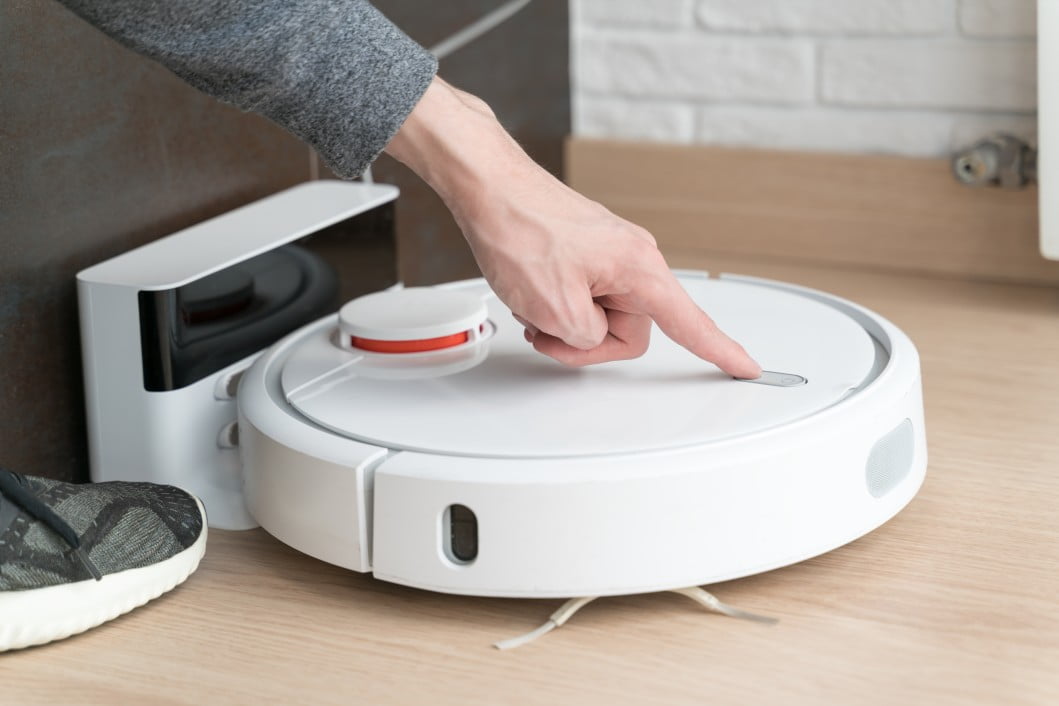
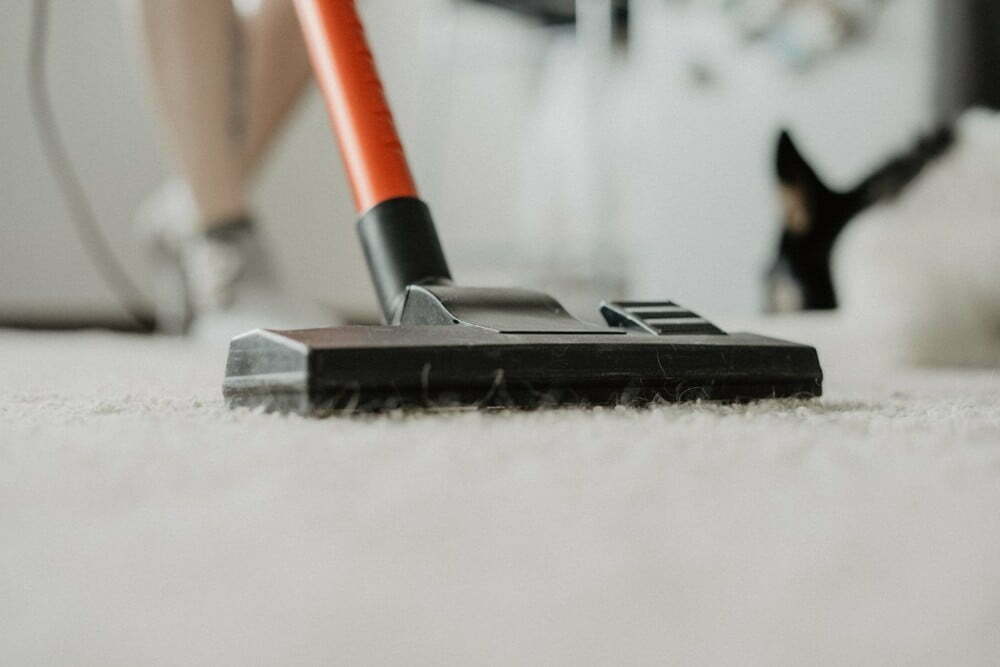
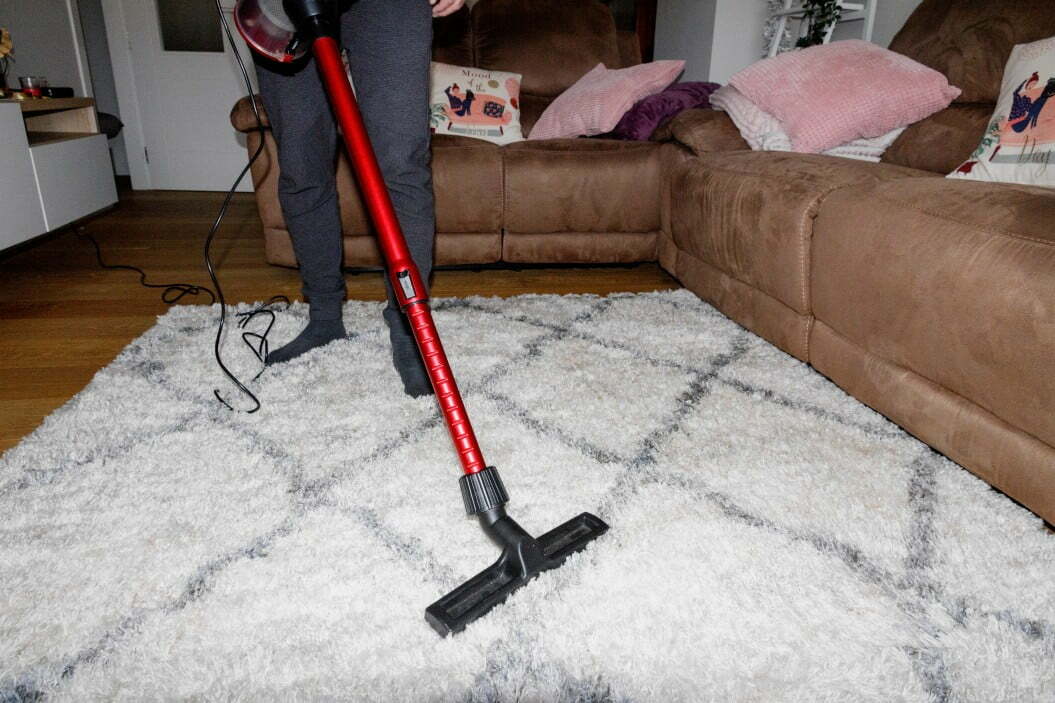
![Best Bissell Vacuum in [year] 33 Best Bissell Vacuum in 2026](https://www.gadgetreview.dev/wp-content/uploads/best-bissel-vacuum-image.jpg)
![Best Miele Vacuums in [year] 34 Best Miele Vacuums in 2026](https://www.gadgetreview.dev/wp-content/uploads/best-miele-vacuum-image.jpg)
![Best iRobot Vacuums in [year] 35 Best iRobot Vacuums in 2026](https://www.gadgetreview.dev/wp-content/uploads/best-irobot-vacuum-image.jpg)
![Best Vacuum with Retractable Cord in [year] 36 Best Vacuum with Retractable Cord in 2026](https://www.gadgetreview.dev/wp-content/uploads/best-vacuum-with-retractable-cord-image.jpg)
![Best Insurance for Home Appliances in [year] 37 Best Insurance for Home Appliances in 2026](https://www.gadgetreview.dev/wp-content/uploads/best-insurance-for-home-appliances.jpg)
![Best Insurance for Homeowners in [year] 38 Best Insurance for Homeowners in 2026](https://www.gadgetreview.dev/wp-content/uploads/best-insurance-for-homeowners.jpg)
![Best Self Propelled Vacuums in [year] 39 Best Self Propelled Vacuums in 2026](https://www.gadgetreview.dev/wp-content/uploads/best-self-propelled-vacuum-image.jpg)
![Best Commercial Leaf Vacuums in [year] 40 Best Commercial Leaf Vacuums in 2026](https://www.gadgetreview.dev/wp-content/uploads/best-commercial-leaf-vacuum-image.jpg)
![Best Vacuums for Cat Litter in [year] 41 Best Vacuums for Cat Litter in 2026](https://www.gadgetreview.dev/wp-content/uploads/best-vacuum-for-cat-litter-image.jpg)
![Best Robot Vacuums for Long Hair in [year] 42 Best Robot Vacuums for Long Hair in 2026](https://www.gadgetreview.dev/wp-content/uploads/best-robot-vacuum-for-long-hair-image.jpg)
![Best Dyson Vacuum in [year] ([month] Reviews) 43 Best Dyson Vacuum in 2026 (January Reviews)](https://www.gadgetreview.dev/wp-content/uploads/Dyson-DC65-e1479509572460.jpg)
![Best Dorm Vacuums in [year] 44 Best Dorm Vacuums in 2026](https://www.gadgetreview.dev/wp-content/uploads/best-dorm-vacuum-image.jpg)
![Best Vacuums for Fleas in [year] 45 Best Vacuums for Fleas in 2026](https://www.gadgetreview.dev/wp-content/uploads/best-vacuum-for-fleas-imagre.jpg)
![Best Robot Vacuum for Thick Carpet in [year] 46 Best Robot Vacuum for Thick Carpet in 2026](https://www.gadgetreview.dev/wp-content/uploads/roomba.jpg)
![Best RV Vacuums in [year] 47 Best RV Vacuums in 2026](https://www.gadgetreview.dev/wp-content/uploads/best-rv-vacuum-image.jpg)
![Best Vacuums for Apartment in [year] 48 Best Vacuums for Apartment in 2026](https://www.gadgetreview.dev/wp-content/uploads/best-vacuum-for-apartment-image.jpg)
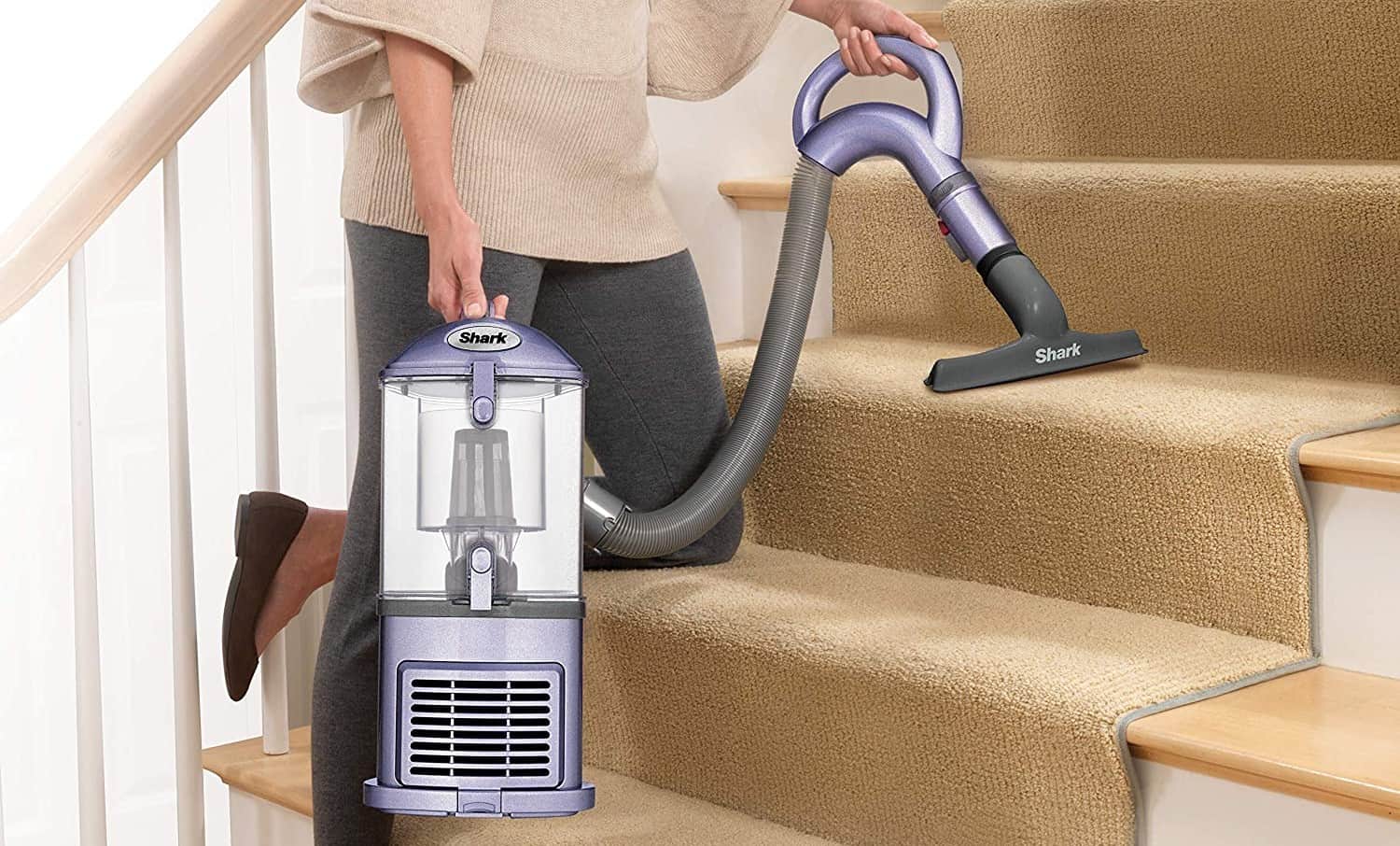
![Best HEPA Vacuums in [year] 50 Best HEPA Vacuums in 2026](https://www.gadgetreview.dev/wp-content/uploads/best-hepa-vacuum-image.jpg)
![Best Water Filtration Vacuums in [year] 51 Best Water Filtration Vacuums in 2026](https://www.gadgetreview.dev/wp-content/uploads/best-water-filtration-vacuum-image.jpg)
